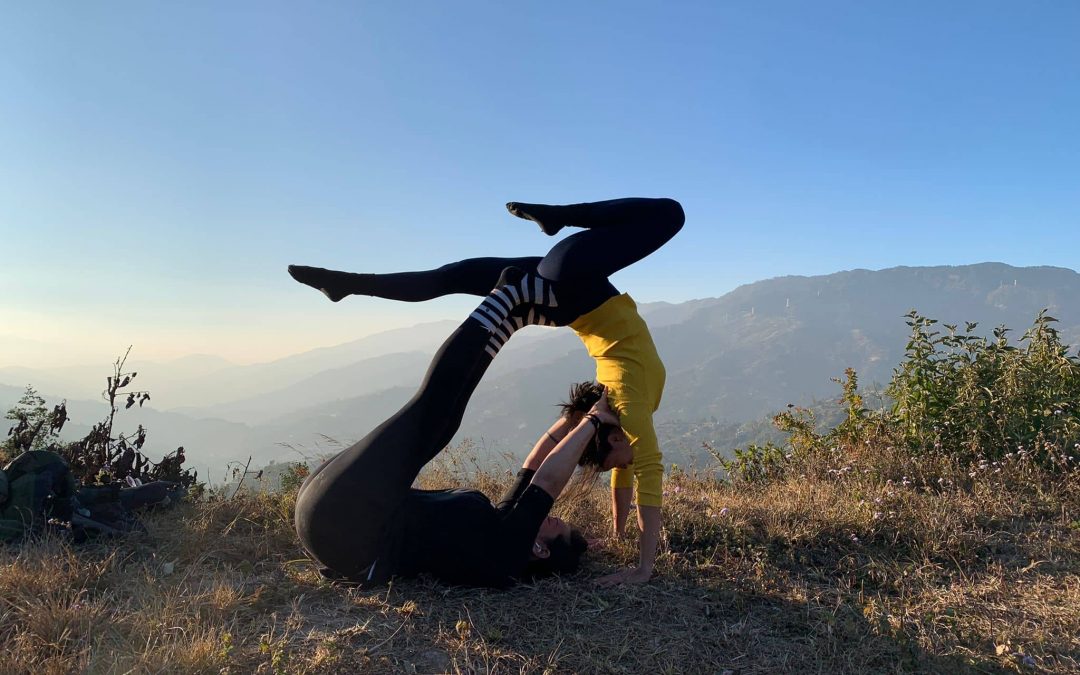
by Tirtha Acharya | Apr 25, 2022 | Yoga
Advanced YTTC- Teacher Training Course
There are various courses of yoga given at various institutes, and retreat centers around the world. Among the various yogic courses, there is an advanced yoga teacher training course which focus on advanced practice of yoga asana, meditation, breathing and all dimension of yoga. Advanced YTTC we provide in Nepal Yoga Home is authentic, traditional, multi style and true yoga which practices by our saints. Before going further let’s first know what advanced yoga is and what advanced yoga teacher training course is.
What is Advanced yoga?
Advanced YTTC is a type of yoga that is classified as difficult to perform and may take some time and dedication to master. Generally, it consists of difficult poses and postures which untrained bodied people may find extremely difficult to perform. Some are difficult for the physical body while some are difficult for the spiritual as well as the mental body.
What is an Advanced yoga teacher training course?
Advanced YTTC is a subject of study for those who are willing to be the teacher of advanced yoga. They are in the process of mastering Advanced yoga so that in the future they can be teachers in this advanced course. Here they will go deeper into the subject matter of yoga which is going to be its very core and essence.
Why take advanced yoga?
Taking advanced YTTC later may come forward as one of the best decisions taken by the individuals who decide to take part in it. There are various reasons why I should take advanced yoga teacher training and let us discuss them,
The benefit to your own body
This may have the name of a teacher training course, but it does not mean that it is not going to be beneficial to the body of the individual who is going to practice it. One will practice yoga and healing techniques for the entire course which will take out the toxins from the body and mind which is going to make them healthier.
Advanced knowledge
Ast the name itself suggests this is the advanced form of yoga with higher knowledge in both theories as well as the practical form. People who strive for a great form of yogic knowledge, principles, and yoga forms should join this course as advanced YTTC consists of a lot of them.
Amazing experience
Learning yoga at this amazing place itself is a wonderful experience. One can take a break from their hectic schedule and once in a while, it not only feels good but also is the need of the body, mind, and soul. Day-to-day schedule and always running can sometimes hamper both physical and mental health.
Why Nepal is best for advanced YTTC?
Nepal is best for advanced yoga learning and advanced yoga teacher training because this is the origin of this spiritual practice. The authenticity of the yogic practices that are found here is hard to find in other parts of the world. One can investigate and research even the process and knowledge that is yet to be rediscovered and lost to the time.
Is it necessary to do advanced posture?
Yoga comes in all shapes, sizes, and postures. There are easy postures and poses which can be done even by someone who has done yoga for the first time in their lives. However, there are such which need constant focus for even years to do so. However, the question is it necessary to do advanced posture?
Yes, every type of yoga has its benefits and effects on the body. The first reason is the benefit that is given by one posture and exercise is hard to precisely get by another technique so, to reap all the benefits one must even learn the advanced posture.
Another important thing is that we are learning to be a teacher of yoga and to be a teacher and give knowledge one must be able to master the topic so that they can have a better understanding of the subject and give the complete knowledge to their students. The name of the course is advanced YTTC, and one needs to master advanced poses to teach others.
Why are only a few people interested in advanced yoga?
The times are changing. In this informative world, people are more interested in a healthy and active lifestyle. Hence, more and more people are practicing yoga and arriving in the amazing world of yoga. However, most people only get stuck at the beginner’s level and do not go beyond that and there is a big reason behind that.
Mainly people practice yoga so that they can be healthy, it is not to gain advanced knowledge or to be spiritual but to have a healthy body. Basic yoga steps and basic yoga knowledge also can grant amazing health benefits and other advantages and most people are satisfied with what they are getting and do not strive to get to the advanced level it is the biggest reason why most people are not interested in advanced YTTC.
There are some people who despite having a great interest in advanced yoga and superior yogic knowledge are not able to get it and for them, the biggest obstacle is their time. To master yoga in the advanced form and gain superior yogic knowledge one needs a considerate amount of time, dedication, and practice. Even to go to advanced YTTC one needs time. People even having interests there are not able to give them time because they have their profession, study, and other work to do to run their lives. Even with great interest and enthusiasm people are not able to perform advanced yoga.

by Tirtha Acharya | Apr 20, 2022 | Yoga
Do Your First Yoga Experience In Nepal, The Authentic Place For Yoga
This article will show you my first yoga experience in Nepal. I had wanted to take yoga courses for a long time, but I was apprehensive about getting started. I used to worry that I would seem out of place amongst the limber individuals doing incredible yoga positions. However, I was completely incorrect! I have come to understand that yoga training has been beneficial in helping me reduce stress and become more conscious of the importance of living in the moment. Isn’t it incredible?
Why is Nepal Best for Yoga Experience?
This location is one-of-a-kind. I could not have asked for a more pleasing environment to complete a yoga teacher-training program. From the depths of yoga’s origins to the simplest pleasures of laughter and smiles, it teaches you the importance of maintaining a healthy balance in your life. Every one of the professors has their unique thoughts and points of view, and it is this diversity helps to make the lessons so comprehensive. As soon as you walk through the door, the atmosphere and the Prakash family will make you feel at ease. I first learned the truth about what yoga is about, particularly in the philosophy sessions, where lectures are delivered with great passion and commitment to the practice.
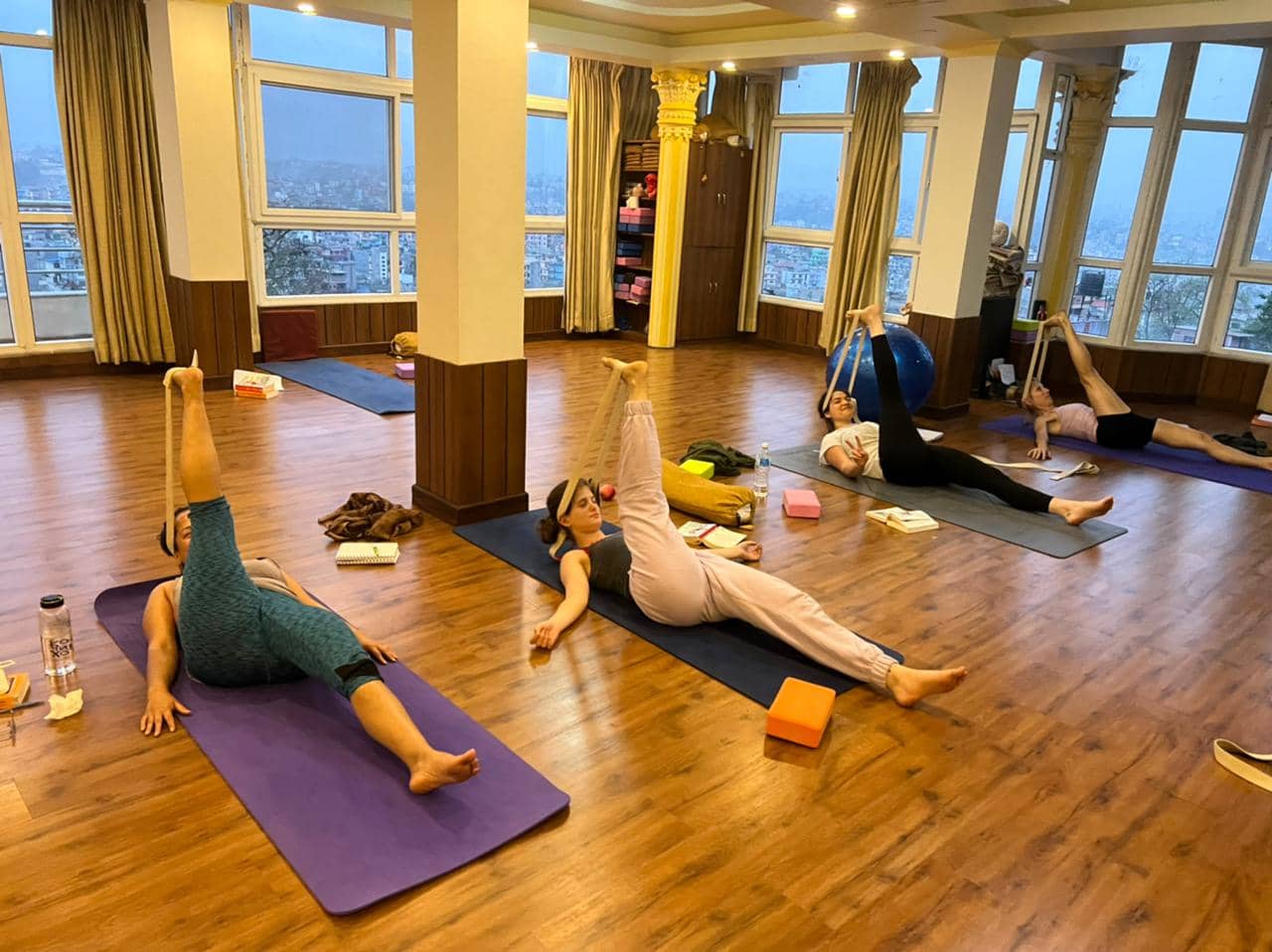
The set consists of a warm and welcoming ambiance in which you will be welcomed and cared for by a selfless and caring family of practitioners. You cannot place a monetary value on the invaluable insights you will get from all of the professors here, who are unquestionably the finest at what they do and who use innovative teaching approaches.
The classroom is energized by a varied collection of non-judgmental, helpful, compassionate, and, most importantly, treat each other as if they were members of their own family. I like the dynamic of knowledge sharing among the folks with whom I spend a lot of time. The most significant thing is that you may also have your own time and space to devote to your demands and requirements.
I am looking forward to my first visit to a yoga retreat right now.
It is something you should expect on your first day as well. Here are something that I face during my first yoga experience.
I was dripping wet with sweat!
First thing in my first Yoga Experience. Make sure you are prepared, you people! Yoga is a full-body workout in and of itself. After a full 15-minute yoga practice, I never anticipated being completely drenched in sweat. The majority of people believe that yoga consists of favorable positions. Although it is true, even a moderate yoga flow may cause you to sweat, just like any other fitness plan.
Poses that seem to be simple are often back-breaking!
The second thing in my first Yoga Experience. Just because the trainer seems to be doing it easy does not imply it! Yoga positions need a great deal of concentration and perfect breathing. It may seem that maintaining a job is simple to you, but your body will have to work harder to keep it. In the beginning, you may not strike the same position as everyone else! However, do not worry, everything will be OK. It will not affect your enthusiasm for yoga. I could not reproduce identical postures on the first day, but the setting was pleasant, and I did not feel intruding.
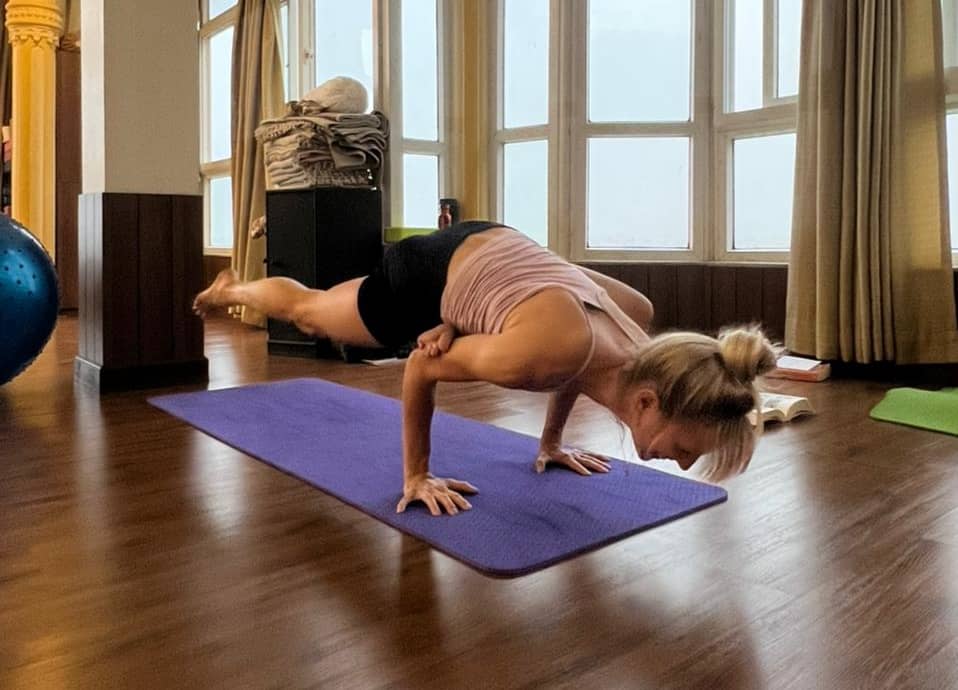
I could not even pronounce the majority of the asanas
Three things in my first Yoga Experience. Your yoga instructor may use Sanskrit terms that you are unfamiliar with and find difficult to understand. Although most professors use English names, you will soon begin to know some of them after some time.
Impressive Begging
Impressive begging is another significant part of my first Yoga Experience. However, it is an excellent trap! Yoga begins with the singing of the word ‘om.’ You sit there making sounds while doing absolutely nothing! Chanting the word “Om” signals the start and end of a yoga session, which is used at both times. As repeated, the expression produces a vibration with the same frequency as found in all things in nature.
Depending on the situation, you may also hear your instructor utter ‘Namaste’ at the beginning or conclusion of the lesson. In India, the greeting ‘Namaste’ means ‘I bow to you,’ which is used to express respect. It is used to express gratitude to those who are close to you.
There is a physical exchange of contact.
Another aspect of my first yoga experience. Essentially, your yoga trainer will modify you to ensure that you are in the proper poses. These changes will surely help you correct your posture and stances, even though they may seem scary at first.
Savasana is, without a doubt, a calming position!
Savasana is a yoga term that means’ corpse position.’ It is a resting position frequently practiced at the end of a yoga lesson. It entails lying down on the floor, pleasantly and silently, with no thoughts running through your head. It is similar to sleeping but without sleep! It is all about having fun! Savasana induces complete relaxation, allowing you to rest until the end of the lesson.
If you are in Savasana, it may not recommend that you stand up and leave the class. Even though it only lasts two to five minutes, it is an essential aspect of a yoga practice. Your instructor may explain the significance of this stance, which includes letting the body absorb up the practice’s energy and benefits. After a challenging yoga class, it is a beautiful method to relax both your body and mind.
At first yoga experience, I planned to attend yoga classes twice a week, but I am finding that I am becoming hooked to the practice. Now that I am doing yoga five days a week, I have improved my flexibility, strength, stress reduction, and good sleep.
I highly recommend Nepal yoga Home for your first yoga Experience.
Aasma
Yoga Graduate from Nepal Yoga Home
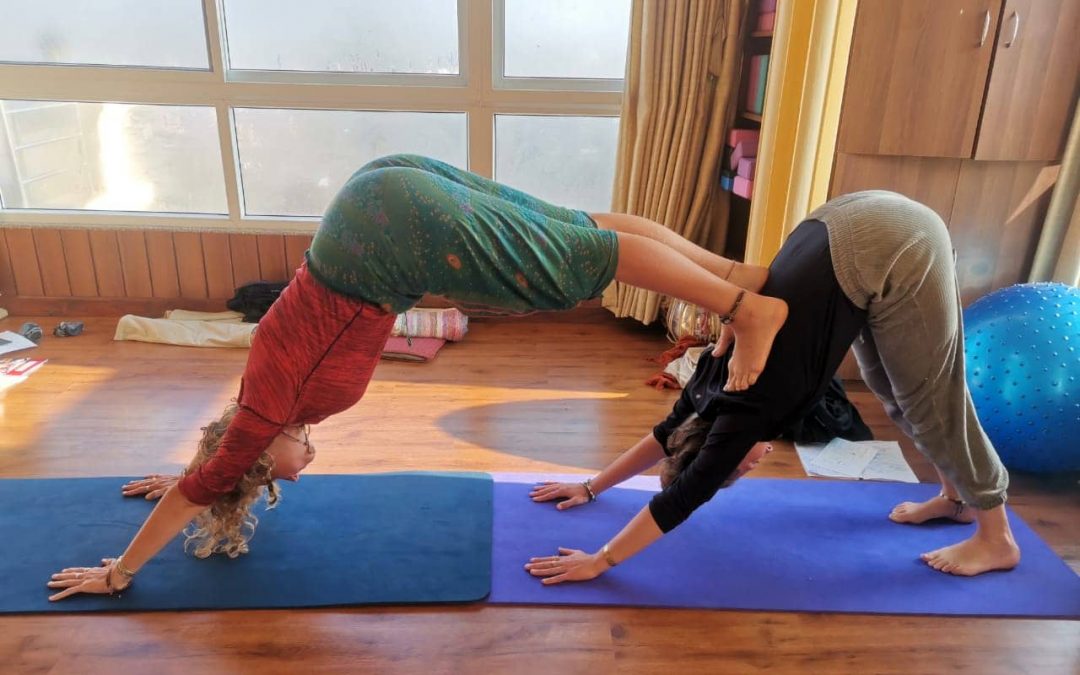
by Tirtha Acharya | Apr 15, 2022 | Yoga
Yoga Training Class in Nepal, Why To Participate YTT in Nepal
Nepal is known for its yoga practices and yoga training classes. Many places provide yoga teacher training. Among many, there is a yoga home for yoga teacher training and yoga training classes that stands out due to its closeness to the original methods and knowledge as well as natural techniques.
Yoga training class provides an amazing opportunity for individuals that are willing to take part in amazing yogic activities. But, saying this much is not enough for the people who are investing their time and resources, one needs an answer to why Yoga home and why yoga training class there.
The answer does not consist of one word or even one point. There are many reasons and points to the answer why Nepal Yoga home for yoga training class. Let us look at each of those points in detail:
An amazing experience
The first and the most wonderful thing about Yoga training class in Nepal Yoga Home is that it is going to be an amazing experience. It is like a journey to an amazing destination, but the journey will be more beautiful than the journey itself. Every element will combine to give the participating individual an amazing journey from the very beginning to the very end.
Valuable certificate
People get yoga training classes to begin their careers in yoga and related fields. If that is the case, then for then Yoga home for yoga training class is the best place for them. The certificates that are provided by Yoga home for yoga training class are valuable and using this one can begin a career in yoga and similar fields.
Amazing teachers
Teachers are the key to learning. Yes, a great deal about learning depends mostly on students and their dedication to their studies. However, the ability, knowledge, and experience of the teacher also come into play during the study process. Only a knowledgeable teacher is also not enough. They should be able to communicate with their students and make an environment for learning. Yoga home in this matter has the most amazing teachers with years of experience and knowledge in this field. The teachers will amazingly through this process.
Learning environment
Yogic practices and yoga are designed to be practiced in places that connect with nature. That is the very reason why sages who practice yoga and meditation love to live in places that are closer to nature than civilization and cities. Also, the learning centers of yoga and similar places are built on the edges of society which can connect both nature and society. If one arrives at Nepal yoga home for a yoga training class, they will also have the chance to connect with nature and be a step ahead in their yogic practices.
Aside from this the environment that exists between the students and students, students and teachers, and students and management also matter in the learning procedure. Yoga home acknowledges this and maintains a balanced and healthy environment among them so that a good and amazing atmosphere can be created.
Yoga teacher training courses
This must be the greatest reason to come into Yoga home for yoga training class. Yoga home provides many wonderful courses related to yoga teacher training. There are 100 hours of yoga teacher training courses, 200 hours of yoga teacher training courses and 500 hours of yoga teacher training courses, and other various similar courses. These periods are designed to have the perfect balance between the courses of study and the amount of time. One can see the study materials and decide for themselves what they want. If they want a detailed course and have been in this field recently and want to spend more time learning, then longer hours teaching courses is for you.
However, if the individual has been on this path for some time and can easily understand the topics of the related field then they can take the courses for a shorter period. But all of the courses that are provided are very amazing and wonderfully designed to benefit the students.
Amazing management and the entire team
Yoga home is an organization that has dedicated its service to the world of yoga, yogic practices, and the well-being of the individuals that arrive here in search of a healthier lifestyle. Generally, people who arrive here for yoga training classes interact with teachers and some other members who work in the field of yoga and other similar activities. However, there is an entire management team behind the amazing work of Yoga house.
Some people do not come forward in the light but are working hard behind the curtains to keep the performance of this amazing organization at its peak. The amazing service of yoga house for yoga teacher training that people see is the effort of all of the individuals, the teachers, the staff, and the entire management team who work very hard to give the thrilling, amazing and authentic experience of yoga teacher training.
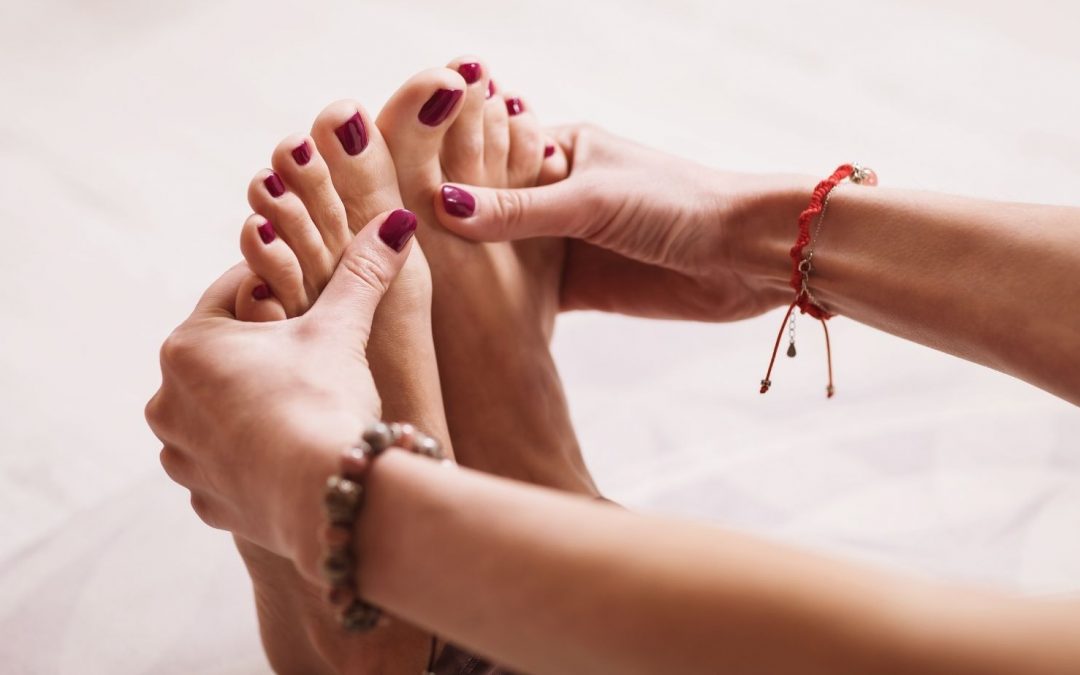
by Tirtha Acharya | Mar 31, 2022 | Yoga
YOGA AND EXERCISE ARE DIFFERENT – YGOA IS MORE THAN PHYSICAL EXERCISE!
Yoga and exercise are completely different to each other. Yoga was developed centuries ago in the ancient Indian subcontinent. Yoga is a set of mental, physical, and spiritual practices that are beneficial to overall wellbeing. Yoga therapy involves a variety of course for the mind and body that includes posture alignment exercises, breath exercises, relaxing techniques, deep breathing techniques, and various forms of practice of mediation.
Incredible benefits that come from Yoga to Health & Wellness
Yoga is a sister science to Ayurveda which beliefs in the same principle of healing and wellbeing. The benefits of Yoga are derived from selecting a combination of yoga-related therapies designed to address various psychological, physical, and spiritual tasks. All these therapies are the most effective type of yoga science applied in their form.
As a fantastic choice for alternative treatments, these yoga practices provide benefits that go beyond counting and are a significant step to help us manage diseases of many causes. many people thinks that yoga and exercise are are similar but its totally wrong concept. While yoga practices aid in reducing symptoms, easing discomfort, enhancing the endurance and strength of our bodies, and restoring balance to our bodies, they also help improve our emotional wellbeing as well as helping to educate our souls on a spiritual level.
The Yoga Therapy
Yoga is now a tried and tested treatment for achieving body, mind, and spiritual harmony. There are numerous inspirational stories based on the practice of Yoga and exercise’ that have relevance to the present day. The technique used in Yoga is growing in popularity worldwide as an effective method of healing. Many teachers have also added the intention of therapeutic the practice of Yoga. In the same way, increasing numbers of people accept Yoga as part of their routine medical treatment.
Incredible Gains through Yoga!
Yoga and its exercise can be highly effective as an alternative treatment method. They are best suited for people seeking to improve their mental and physical health and emotional stability and connect to their true selves. It’s not a single workout, but it is an ongoing way of life that, if practiced with a sincere desire, can improve our overall health. The different therapies offer relief on an individual basis, which means that people of diverse age groups can benefit from various styles of Yoga and practices to get rid of similar ailments.
Numerous Avenues to Fitness and Longevity
- Yoga therapy is not a subject that can be defined by just one definition. But, the practice of Yoga indeed offers many advantages (in broad terms).
- It is believed as a way to improve mental and physical wellbeing.
- Yoga is thought to be a science of the spirit that every person can gain in the form of the restoration of inner balance and boosting vitality, and enhancing mental power.
- In a nutshell, Yoga significantly improves physical and emotional health. For instance, by focusing on your breath and body, Yoga helps reduce anxiety, depression, and stress and improve memory and concentration.
- It can also help improve the posture of your body through different asanas. A profound meditation practice, like Padmasana, Siddhasana, and Sukhasana, assists in sitting for a long time, and asanas such as Hamsasana and Mayurasana eliminate toxins from the body. Asanas such as Makarasana, Bhujangasana are beneficial for the spine and back and for strengthening muscle and flexibility.
- In addition, some of the most effective Pranayama or deep breathing yoga and exercises, such as Anulom vilom as well as kapalbhati, bhastrika, are well-known for aiding in the control of our breathing which is the primary life force and longevity.
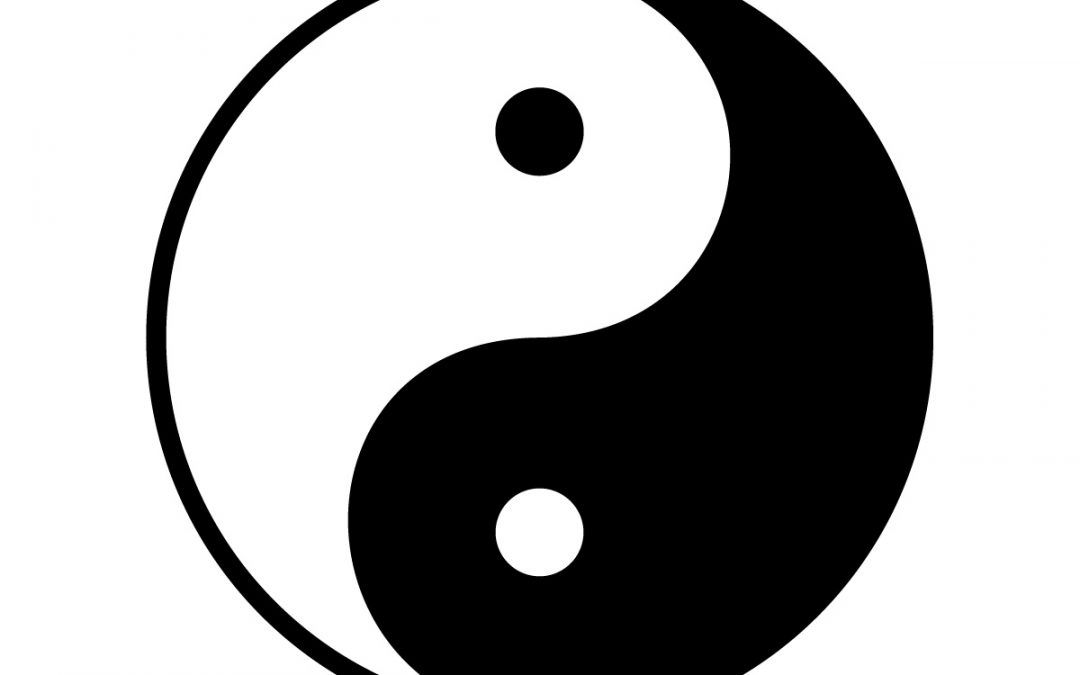
by Tirtha Acharya | Feb 11, 2022 | Yoga
Yin and yang in yoga
Yin and yang are the Chinese philosophical concept that describes the balance that is obtained by the combination of two opposite forces. The two forces are opposite and are represented by the two colors black and white. The two forces of yin and yang combine to form a circle on which the two colors are in equal amounts. Like yin and yang, yin and yang yoga also uses two distinct types of yoga to form the technique of yin and yang yoga.
Let’s first look at the individual components of yin and yang yoga to understand it as a whole,
Yin yoga
The yin yoga is a very distinct type of yoga where yoga postures are performed in a slow manner, which uses the knowledge from the ancient Chinese healing technique combined into the various forms of yoga. The most distinct feature of yin yoga is that it is very slow compared to all of the various forms of yoga.
The masters of Yin yoga may hold the same yoga postures for five minutes or more while the beginners who are just knowing yin yoga hold the same posture for 45 seconds to 2 minutes. The slow postures are performed to stimulate the channel of the subtle body which is known as Nadis in the Hatha yoga style whereas known as meridians in Chinese medicine knowledge.
Yang yoga
Opposite of yin yoga, Yan yoga is the use of the more dynamic forms of yoga that are more active. In yang yoga, the practitioner flows from one posture to another in a sequence. It is Ashtanga and Jivamukti yoga practice and includes various forms from there. The postures are connected through the medium of breath.
With each breathing sequence, the practitioner of the yang yoga jumps from one posture to another. The masters of yang yoga can perform a very long sequence of yoga postures while the beginners need to perform the small sequence and gradually go up to the level of the master.
Yin and yang yoga
Yin and yang yoga is the balanced combination of these two forms of yoga. The first element of the yin and yang yoga is yin which is the slow movement and being steady while the next element is the fluid and flowing form of yoga on which the partitioner flows from one form of posture to another. Yin and yang yoga is just the right combination of these two elements. They are opposite, where yin is a slow movement while yang is a rapid movement. Despite being different and opposite they can be included into one to form the perfect harmony and the result is yin and yang.
Practicing the yin and yang yoga
As the perfect balance within yin and yang, there is also the right balance between the practice of these yoga forms. The first half is the time of one yoga, and another half is the time for another yoga. For example, if on the first half yin is practiced then on the second half yang is practiced. There is not a necessary format that says that one needs to be always practiced first, either one can be practiced first depending on what one aims to attain from practicing yoga.
Yin yoga may be practiced at the beginning to calm the mind and waken the muscle for the strong movement of the yang yoga, or the yin yoga may be performed after yang yoga to calm the nerves and give proper resting movement to the muscles.
Benefits of performing yin and yang yoga
Yin and yang yoga is the balanced combination of the two forms of yoga. With the balanced combination, these forms have the advantages of both forms. Yin and yang yoga is the perfect combination which is best way to utilize both forms,
Yin stimulates the energy channel within the body. The practicing of these forms ensures the movement of the vital life energy within the body healing the organs and ultimately the body itself.
The flow of one posture to another by practicing yang yoga develops stamina from within. Good stamina is especially important for the body.
The slow movement of yin yoga and steady movement is known to get rid of stress and anxiety and give strength to the mind of the individual who practices it.
Yang yoga uses the power of breath to flow from one posture to another. By using the power of prana, one also increases the life force within them.
Yin yoga is holding the same posture for a long period. By practicing this form of yoga, they can also program their body for going into longer and deeper meditation.
By practicing yang yoga one can improve the circulation of blood in the body as well as enhance the flexibility of the muscles of the body.
The fast movement of the yang yoga gives strength to the body and also tones the body to give it an attractive shape.
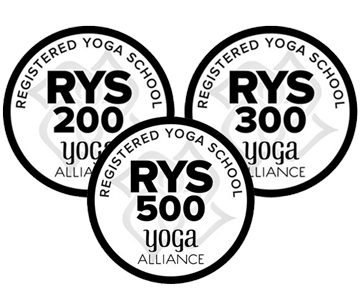
by Tirtha Acharya | Nov 19, 2021 | Yoga
Top 5 Certification of Yoga
Yoga certification is a teacher authority granting that is done by a certain organization. Yoga with its emerging popularity started gaining lots of people who wanted to emerge as teachers. However, being a field that need high knowledge and experience and not everyone being able to do so yoga certification was invented. Yoga certification only allows the worthy and experienced one to be the yoga teacher. Moreover, the yoga certification also manages the flow of people who try to become yoga instructor.
Top 5 yoga certifying organizations are as follows:
1) Yoga Alliance USA
2) Yoga Alliance Australia
3) Yoga Alliance India
4) Yoga Alliance Italy
5) World Yoga Alliance
Yoga Alliance USA
When yoga began to spread very vastly to the west, people started to think the best way forward is to create yoga certification. Yoga Alliance USA is a non-profit organization established for the purpose of yoga certification. The organization was created in year 1999 with the motive of promoting yoga. The organization developed a voluntary registry to recognize yoga schools and yoga teachers whose training met their existing standards. Year by year yoga alliance developed and enhanced itself as more and more people recognized the organization. Then in 2007 the country went international.
Yoga certification achieved through Yoga alliance is one of the top yoga certifications in the entire world. The organization uses its core curriculum sets to give an individual or organization its yoga certification. From the moment of creation due to good leadership, impeccable service, dedicated team members yoga alliance is only getting better and bigger in the years. As the years yoga alliance came up with online teacher registration.
The feature was available 10 years after the birth of the organization. Due to this online registration system after going international the organization reached to new heights with applicants all over the world. The same year specialized credentials for children and parental yoga were launched by the organization.
Yoga Alliance Australia
Yoga Alliance Australia was established in 2013 with its headquarters located in Sydney. The organization that had humble beginnings, in now considered one of the most innovative yoga organizations of the world. The organization was established by the renowned gurus John Scott, Ginji Lee, Alexandar medin and many others. The organization was established with the objective of developing a voluntary online registry to recognize yoga teachers and schools whose training met their designated standard in various aspects.
The founders with the volunteer board of directors with their specialty in relative fields, massive experience and dedication made the organization what it is today. Due to their massive efforts the organization is now hailed as among best yoga certification in entire world. From its establishment in 2013 the organization has come a long way. Year by year more people joined, the organization also kept renovating and updating itself with time.
Yoga Alliance India
Yoga Alliance India is the first international yoga alliance of India. It came into existence as a registered organization in year 2006. Sri Swami Vidyanand is the founder as well as the president of Yoga Alliance India.It is a vast organization that is providing yoga knowledge and certification to those who want to move ahead in the yoga field. Yoga Alliance India is so vast that it has 185+ certified yoga schools in India with 6000+ yoga teachers.
Yoga Alliance India is very dedicated to nurturing authentic yoga traditions throughout the world. Its certification standard and teaching system and curriculum are one of a kind in the world. The strength that Yoga Alliance India holds over other organizations is its location on the land who gave birth to the yoga. Its source location gives the root connection to the yogic principle and technique, which others will have tough time to get.
Yoga Alliance Italy
Yoga alliance Italy with its curriculum, team and courses made it to one of the top yoga certifications in the world. The organization like in many countries is going ahead with progress never looking back. Yoga Alliance Italy with its unmatched efficiency and one of the best standard set for certification is what it is today.
Yoga Alliance Italy in 2017 with aid of national CSEN, introduced RYS 250 plus standard for yoga teacher training. The method was so amazing and well-integrated that today thousands of Italian as well as International yoga centers practice it. Introducing new Training structure and creating new enrollment levels when the pandemic hit was some of the best decisions of the organization. With the innovations, ideas to tackle the market, professionalism got Yoga Alliance Italy what it is today.
World Yoga Alliance
World Yoga Alliance is an exceptionally large organization and has members over 80 countries worldwide. The headquarters of the organization in located at Swaroop Nagar, New Delhi. It is a non-profit organization that aims to share the yoga knowledge and technique to the world. The organization has an extraordinarily rich history form its establishment to turning into a yoga heaven that it is today.
The concept and amassing of yoga knowledge and professionals started back in the 1990. However, world yoga alliance was officially registered as an organization in 2011 Nov 17th.
World Yoga Alliance has many features and facilities both providing yoga knowledge as well as yoga certification. With its online application and information gathering combined with other features makes it client’s favorite. Due to this remarkable feature and dedication, it is one of most cherished yoga certifications in the world now.
Yoga certification is the yoga trend of today. Moreover, it is also a need of the yoga world. The most important thing yoga certification can do is control the flow of yoga teacher maintaining standard. Today one can wake up and decide he can teach yoga tomorrow. Is it right? Of course, not Yoga teaching is a delicate field. One need a fair share of experience and knowledge to be able to teach yoga. However, that’s where yoga certification comes in. The organizations judge individual on the various aspects of their knowledge, experience and teach them required course and then only provide them with yoga certification.
If someone is aiming to become a yoga teacher, they should aim to get their certification form an organization with best reputation. Then pursue their goal to become a better yoga instructor
Nepal Yoga Home is registered with Yoga Alliance USA, Yoga Alliance Australia, Yoga Alliance India, and Yoga Alliance Italy all. So, when you complete your yoga teacher training from NYH then you will be an internationally certified yoga teacher and you can teach yoga all over the world.








